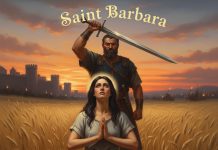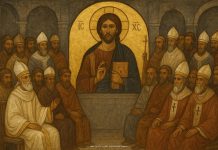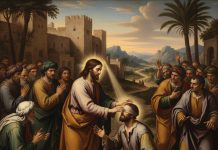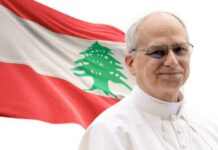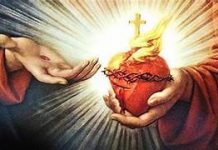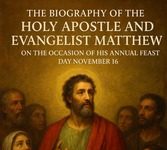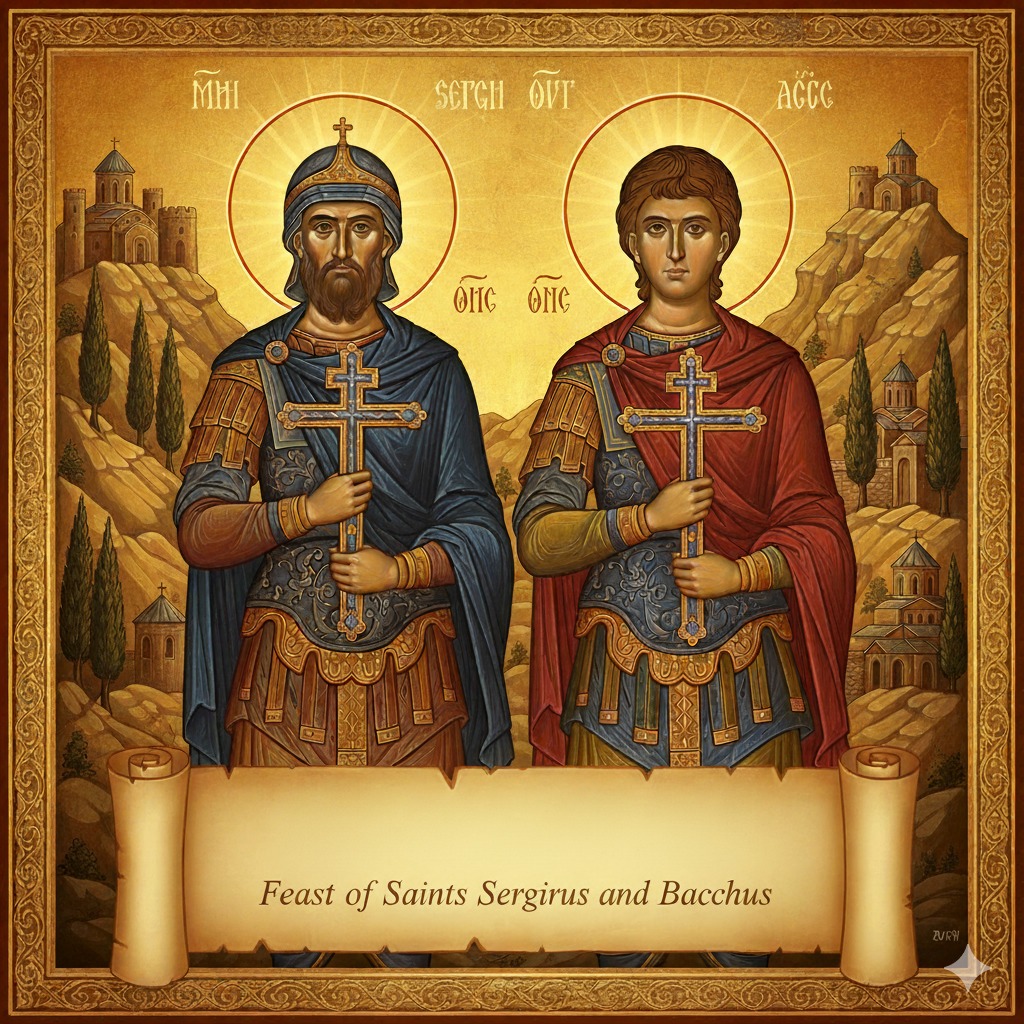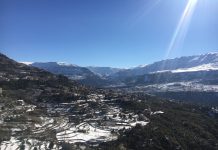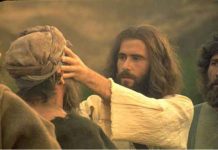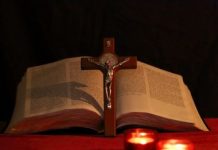Feast of Saints Sergius and Bacchus
Elias Bejjani/October 07/ 2025
عيد القديسين سركيس وباخوس
إلياس بجاني/07 تشرين الأول/2025
تحتفل الكنيسة الكاثوليكية في العالم في السابع من تشرين الأول من كل عام بعيد القديسين سركيس وباخوس. فمَن هما، وما هو تاريخهما الإيماني والكنسي؟
مَن هما القديسين سركيس وباخوس وأين وُلدا؟
كان مار سركيس وباخوس ضابطين رفيعَي المقام في الجيش الروماني، عاشا في أواخر القرن الثالث وأوائل القرن الرابع للميلاد، في عهد الإمبراطور مكسيميانوس. تشير المصادر التاريخية إلى أن أصلهما من المقاطعة الرومانية السورية، التي كانت تشمل أجزاء من سوريا الحالية وشمال بلاد ما بين النهرين، فيما يرى بعض المؤرخين أنهما وُلدا في الرها (أورفة)، التي كانت مركزاً مسيحياً هاماً في الشرق.
حياتهما وإيمانهما
خدم القديسان بإخلاص في صفوف الجيش الروماني وتمتّعا بمكانة رفيعة لدى الإمبراطور بفضل شجاعتهما وولائهما، إلا أنهما كانا في الوقت ذاته مسيحيين مؤمنين بالمسيح، يعيشان إيمانهما سراً في زمنٍ كانت فيه المسيحية تُحارَب وتُضطهد. وحين كُشف أمر إيمانهما، أُجبرَا على تقديم الذبائح للأوثان، لكنهما رفضا بشجاعة وأعلنا أن ولاءهما الأول هو لله وحده. عندها غضب الإمبراطور وأمر بتجريدهما من رتبتهما العسكرية وإلباسهما ثياب الإذلال وتعذيبهما بوحشية. استُشهد القديس باخوس أولاً في بلدة بارباليسوس في شمال سوريا حوالي سنة 303م، وتبعه بعد أيام القديس سركيس الذي نُقل إلى الرصافة (سرجيوبوليس) حيث قُطع رأسه لرفضه إنكار إيمانه بالمسيح. وقد تحوّل قبره هناك إلى مزارٍ للحجاج المسيحيين منذ القرون الأولى.
حياتهما الروحية
لم يكونا رُهباناً بالمعنى المؤسسي، إذ لم تكن الرهبنة قد تبلورت بعد، غير أنهما عاشا حياة نُسكية مكرَّسة لله داخل العالم العسكري، فجمعا بين الشجاعة العسكرية والبطولة الروحية، وكانا مثالين للطهارة والإيمان والثبات في وجه الاضطهاد.
تطويبهما ومكانتهما في الكنيسة
أُدرج اسماهما منذ القرن الرابع في سجلات الشهداء المسيحيين الأوائل، وتُليت سيرتهما في الطقوس البيزنطية والسريانية واللاتينية. وفي الكنيسة الكاثوليكية يُحتفل بعيدهما في السابع من تشرين الأول من كل عام، كما تكرّمهما الكنائس الأرثوذكسية والسريانية والقبطية بوصفهما “شهيدين للمسيح”. ويُعتبران شفيعين للعسكريين والمحاربين، ويُطلب شفاعتهما من أجل الشجاعة والثبات والإخلاص في مواجهة الظلم والاضطهاد.
انتشار تكريمهما في لبنان
وصلت عبادة القديسين سركيس وباخوس إلى لبنان منذ القرون المسيحية الأولى عبر الرهبان الأنطاكيين والسريان والموارنة الذين حملوا سيرتهما من سوريا والرها إلى جبال لبنان. وقد شُيّدت أولى الكنائس على اسميهما قرب المغاور والوديان الجبلية التي لجأ إليها المؤمنون الهاربون من الاضطهاد الروماني. ومع مرور الزمن، انتشرت عبادتهما على نطاق واسع، فغدا اسماهما جزءًا من النسيج الروحي والتراثي اللبناني. وجد اللبنانيون فيهما رمزاً للشجاعة والإيمان في وجه الظلم، وتماهوا مع قصتهما لأنهم عرفوا، مِثلَهما، معنى الاضطهاد والتشبّث بالمسيح رغم الأخطار. ولذلك لا تكاد قرية لبنانية تخلو من كنيسة أو مزارٍ مكرَّس لهما، ومن أبرز هذه الكنائس:
جبيل: المَنصِف، البَربارة، بِجّه، بحديدات، بيت حِبَّاق، حالات، ترتج، جَنَّة، فْغال، قرطبا، مِشمِش، ميفوق.
كسروان: الزعيترة، الكفور، عشقوت، ريفون، فتقا، غبالة.
المتن الشمالي: الجديدة، برج حمود، ضهر الصوان.
زحلة: الفرزل.
بعلبك: عيناتا.
بشري: الديمان، بلوزا، بيت منذر، حدشيت، طورزا، عبدين، قنّات، ووادي قنوبين.
الكورة: أميون، بشمزين، رشدين، زكرون، قلحات، كفتون، كوسبا.
زغرتا: إهدن، إجبع، أردة، أسلوت، أيطو، بسلوقيت، حرف مزيارة، رشعين، سرعل، عرجس، كفردلاقوس.
الضنية: زغرتغرين.
البترون: بشعلة، تنورين الفوقا، مزرعة بلعا، جران، حردين، دوما، رشكده، زان، شبطين، كفرحي، كفرعبيدا، مراح شديد (دير شواح)، ووُطى حوب.
إن هذا الانتشار الواسع يعكس عمق الإيمان الشعبي اللبناني بهذين الشهيدين العظيمين، ويجعل من عيدهما في السابع من تشرين الأول مناسبة روحية ووطنية تعبّر عن الثبات في الإيمان والوحدة في الرجاء.
تأمّل روحي: إيمان اللبنانيين وشفاعة القديسين مار سركيس وباخوس
رأى المسيحيون اللبنانيون في القديسين مار سركيس وباخوس صورة لإيمانهم الثابت بالمسيح، إذ وجدوا في شهادتهما نموذجاً للشجاعة وللتشبّث بالحق الإلهي مهما اشتدّ الاضطهاد. وعلى مرّ العصور، عاش اللبنانيون في جبالهم إيماناً شبيهاً بإيمانهما، فحملوا الصليب في وجه كلّ غازٍ وفاتحٍ حاول طمس هويتهم الدينية والإنسانية. فمن المماليك إلى العثمانيين، مروراً بكلّ الغزوات والاضطهادات التي استهدفت الكنيسة المارونية وسائر الكنائس الشرقية، ظلّ اللبنانيون يرفعون الصلوات إلى القديسين سركيس وباخوس، طالبين شفاعتهما لحماية الأرض والناس والإيمان. وفي كلّ مرّة كانت الجبال اللبنانية تتعرّض فيها للغزو أو الظلم، كان المؤمنون يستعيدون قصتهما ليجدوا فيها قوة الرجاء والاستمرار في المقاومة الروحية، كما رفض القديسان السجود للأوثان رغم التهديد بالموت. هكذا أصبح عيدهما في السابع من تشرين الأول عيداً للشجاعة المسيحية اللبنانية، واحتفالاً بالثبات في وجه الطغيان، وتأكيداً على أن مَن يتشبّث بالمسيح لا يُهزَم مهما اشتدت المِحن. فالقديسان سركيس وباخوس لا يُكرَّمان فقط كشهيدين للمسيح في التاريخ، بل كرفيقَي دربٍ لكلّ مؤمنٍ لبنانيٍ يحمل صليبه يومياً ويشهد للحق وسط عالمٍ مليء بالظلم والأنانية.
تأمّل، وصلاة
يا قديسَي الله، سركيس وباخوس، علّمانا أن نثبت في الإيمان كما ثبَتُّما، وأن نغفر كما غفَرْتُما، وأن نحمل صليبنا بفرحٍ ورجاء. تشفّعا من أجل لبنان، وطن الأرز المقدس، وأرض الإيمان والشهداء، ليبقَى منارةً للمسيح رغم كلّ الصعاب، ولتتحوّل جباله، كما حياتكما، إلى شهادة حيّة للحق والنور.
**الكاتب ناشط لبناني اغترابي
عنوان الكاتب الألكتروني
Phoenicia@hotmail.com
رابط موقع الكاتب الألكتروني
https://eliasbejjaninews.com
Feast of Saints Sergius and Bacchus
Elias Bejjani/October 07/ 2025
The Catholic Church around the world celebrates the Feast of Saints Sergius and Bacchus on October 07 of every year. Who were they, and what is their story of faith and sainthood?
Who They Were and Where They Came From
Saints Sergius and Bacchus were two high-ranking officers in the Roman military who lived in the late third and early fourth centuries A.D., during the reign of Emperor Maximian. Historical sources indicate that they originated from the Roman province of Syria, which then included parts of modern-day Syria and northern Mesopotamia. Some accounts suggest they were born in Edessa (modern-day Urfa), which was a major early Christian center in the East.
Their Life and Faith
Both saints served with honor and loyalty in the Roman army and enjoyed the emperor’s favor for their bravery and discipline. Yet they were also devout Christians, secretly devoted to Christ during a time when Christianity was fought against and persecuted. When their faith was discovered, they were ordered to offer sacrifices to the pagan gods. They refused boldly, declaring that their allegiance was first and foremost to God alone. Furious, the emperor stripped them of their military ranks, clothed them in garments of humiliation, and subjected them to brutal torture. Saint Bacchus was the first to die under torture in Barbalissus (northern Syria) around 303 A.D., while Saint Sergius was later transferred to Resafa (Sergiopolis), where he was beheaded for refusing to renounce his faith. His tomb became an early pilgrimage site for Christians.
Their Spiritual Life
Though they were not monks—since organized monasticism had not yet fully emerged—Sergius and Bacchus lived as lay ascetics devoted to God within the world, embodying purity, discipline, and unshakable devotion to Christ. Their lives combined military valor with spiritual heroism, making them models of faith in public life.
Veneration and Their Place in the Church
Their names appeared in the early Christian martyrologies by the fourth century, and their memory was celebrated in the Byzantine, Syriac, and Latin liturgies. In the Catholic Church, their feast day is observed on October 7, and they are also venerated by the Eastern Orthodox, Syriac, and Coptic Churches as “martyrs for Christ.” They are recognized as patron saints of soldiers and defenders of the faith, and believers seek their intercession for courage, loyalty, and strength in times of persecution.
The Spread of Their Veneration in Lebanon
Devotion to Saints Sergius and Bacchus reached Lebanon in the early Christian centuries through Antiochian, Syriac, and Maronite monks who migrated from northern Syria and Edessa to the mountains of Lebanon.
The first churches dedicated to them were established near rocky caves and mountain valleys, where Christians fleeing Roman persecution sought refuge. Over time, this devotion spread widely, and today their names are deeply woven into the spiritual and cultural fabric of Lebanon. The Lebanese people found in these saints symbols of courage and steadfast faith, identifying with their struggle against tyranny and their unyielding witness to Christ. Consequently, dozens of churches across Lebanon bear their names—a testimony to the living faith of the Lebanese Christian people. Among the many places that honor them are:
District Notable Areas and Churches
Jbeil: Al-Mansif, Al-Barbara, Bjeh, Behdidat, Beit Habak, Halat, Tartej, Janné, Fghal, Qartaba, Mechmech, and Mifouq.
Keserwan: Zaitre, Kfour, Aachqout, Rayfoun, Faitroun, and Ghabaleh.
Northern Metn: Jdeideh, Bourj Hammoud, Dhour el-Souwan.
Zahleh: Ferzol.
Baalbek: Ainata.
Bsharri: Bsharri, Diman, Blouza, Beit Monzer, Hadchit, Tourza, Abdine, Qannat, and the Valley of Qannoubine.
Koura: Amioun, Bchmizzine, Rachdein, Zakroun, Qlayhat, Kfifoun, and Kousba.
Zgharta: Zgharta, Ehden, Ijbeh, Ardeh, Aslout, Aitou, Bsalouqit, Harf Miziara, Rachaaine, Srajl, Arjes, Kfardlaqous.
Dinnieh: Zghartghrine.
Batroun: Bchaaleh, Tannourine el-Fouqa, Mazraat Bel’aa, Jran, Hardine, Douma, Rashkadé, Zane, Chabtine, Kfifré: Kfaraabida, Marah Chdid (Deir Shwah), and Wata Houb.
This remarkable presence across all Lebanese regions illustrates the depth of devotion and faith that Lebanese Christians hold for these two great martyrs, whose feast day, October 07, is celebrated as a national and spiritual occasion expressing stability in faith and unity in hope.
The Faith of Lebanese Christians and the Example of Saints Sergius and Bacchus
For centuries, the Lebanese Christians have seen in Saints Sergius and Bacchus a reflection of their own unwavering faith in Christ, finding in their martyrdom a model of courage and adherence to Divine Truth regardless of the severity of persecution. Throughout history, the Lebanese people in their mountains lived a faith similar to theirs, carrying the Cross in the face of every invader and conqueror who sought to erase their religious and human identity. From the Mamluks to the Ottoman Empire, and through waves of invasions and persecutions that targeted the Maronite and other Eastern Churches, the Christians of Lebanon remained steadfast, invoking the intercession of Saints Sergius and Bacchus for the protection of their land, people, and faith. Every time the Lebanese mountains faced invasion or injustice, the believers recalled the saints’ story, finding in it the power of hope and the strength to continue their spiritual resistance, just as the two saints refused to bow to idols despite the threat of death.
Thus, their feast on October 7 is not merely a historical commemoration—it is a celebration of Lebanese Christian courage, a renewal of resilience against tyranny, and an affirmation that those who hold fast to Christ are never defeated, no matter how severe the tribulations. Saints Sergius and Bacchus are honored not only as martyrs for Christ in history but as companions on the path for every Lebanese believer who carries their cross daily and witnesses to the truth in a world full of injustice and selfishness.
Reflection & A Prayer
O holy martyrs Sergius and Bacchus, teach us to stand firm in faith as you two stood firm, to forgive as you two forgave, and to carry our crosses with joy and hope.
Intercede for Lebanon—land of the Holy Cedars, faith, and martyrs—that it may remain a beacon of Christ amid all trials. And may its mountains, like your courageous lives, be transformed into a living witness to Truth and Light.




